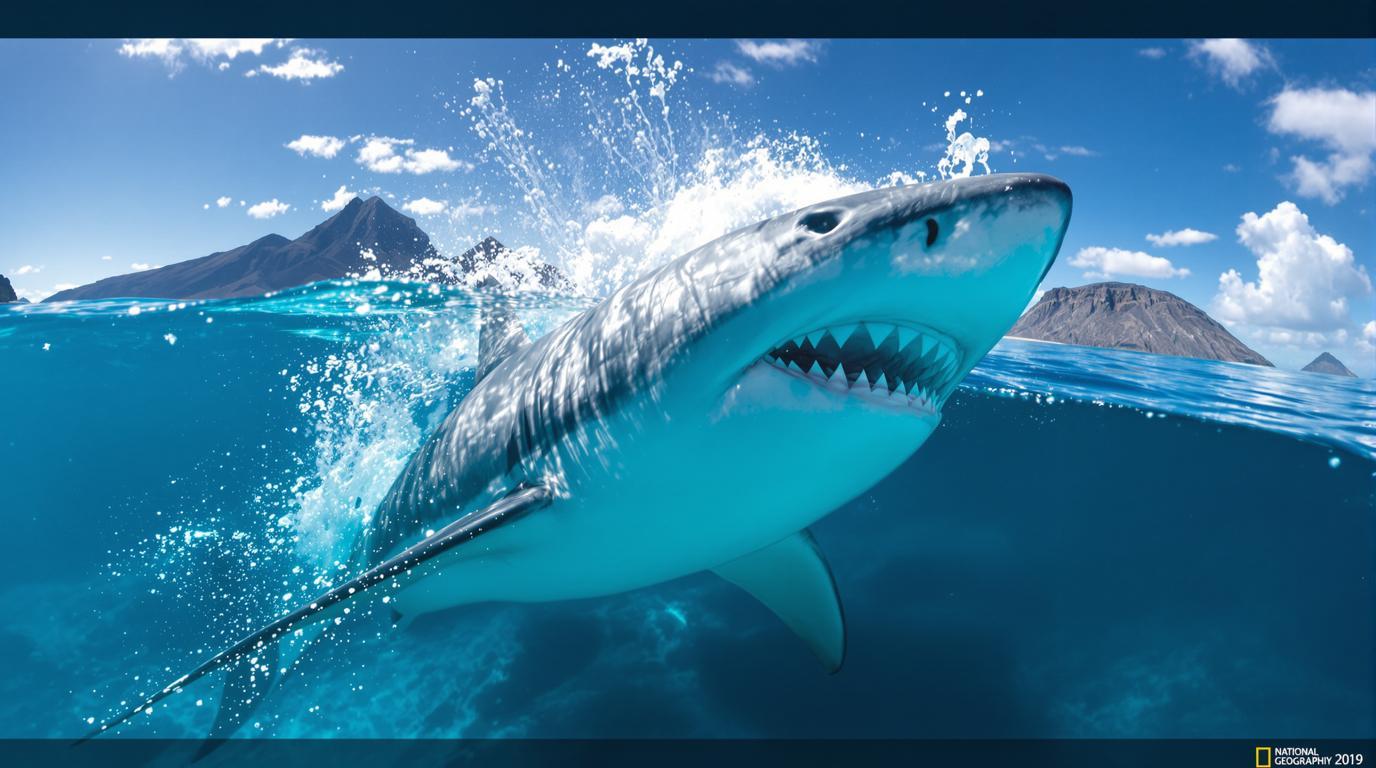Guadalupe Island, Mexico’s volcanic wonder, sits 150 miles off Baja California’s coast. While often confused with the Caribbean’s Guadeloupe, this remote Pacific outpost offers adventurers an entirely different experience – one dominated by dramatic landscapes, marine megafauna, and pristine wilderness that few travelers ever witness.
The Pacific’s forgotten paradise
Rising dramatically from ocean depths of 12,000 feet, Guadalupe’s volcanic peaks reach 4,257 feet above sea level. This stark contrast creates one of North America’s most unique ecosystems – a place where endemic species thrive in splendid isolation. Unlike the Bahamas’ endless beaches, Guadalupe’s appeal lies in its rugged inaccessibility.
Home to the ocean’s perfect predator
Marine biologists consider Guadalupe’s waters the premier location worldwide to observe great white sharks in their natural habitat. The island’s crystal-clear visibility (often exceeding 100 feet) and healthy seal populations attract these magnificent predators in remarkable numbers.
“Nowhere else on Earth can you reliably encounter such large female great whites in water this clear. It’s like they’re posing for National Geographic,” explains Dr. Mauricio Hoyos, who has studied Guadalupe’s sharks for over 15 years.
An ecological treasure trove
Beyond sharks, Guadalupe harbors extraordinary biodiversity. Six endemic bird species make their home here, including the critically endangered Guadalupe junco. The island once supported vast cypress forests, though introduced goats devastated much of the original vegetation. Today, conservation efforts are slowly restoring these unique woodlands.
The Russian connection
Few visitors realize Guadalupe’s surprising historical link to Russia. In the 1820s, Russian fur traders established a temporary base on the island while hunting fur seals. This brief occupation left behind scant physical evidence but added another cultural layer to Guadalupe’s multilayered history.
Wine country’s distant cousin
Just as certain Italian villages preserve ancient winemaking traditions, the adjacent Valle de Guadalupe on mainland Baja (sharing the island’s name) produces exceptional wines. Visitors combining both destinations experience Mexico’s remarkable diversity – from underwater shark encounters to sophisticated vineyard tastings within a single journey.
Getting there: An adventure itself
Reaching Guadalupe requires commitment. Most visitors arrive via liveaboard diving vessels departing from Ensenada, Mexico. These expeditions typically last 5-6 days, with shark season running August through October. Unlike hidden Seychelles coves requiring just a short hike, Guadalupe demands serious planning.
The island’s mysterious interior
While sharks draw most visitors, Guadalupe’s seldom-explored interior holds its own allure. Volcanic craters, windswept plateaus, and remnant cypress groves create landscapes more reminiscent of New Zealand than Mexico. Special permits from Mexican authorities are required to set foot on land, making interior exploration a genuine privilege.
“Walking through Guadalupe’s cypress groves feels like stepping into another world – one that exists nowhere else on our planet,” notes botanist Dr. Elena Vazquez.
Conservation success story
After decades of ecological degradation, Guadalupe is experiencing a remarkable renaissance. The Mexican government designated the island a biosphere reserve in 2005, and conservation efforts have eliminated invasive species while protecting native wildlife. Unlike manicured French gardens, this wilderness is reclaiming its primeval character.
Guadalupe stands as Mexico’s wildest frontier – a place where adventurous travelers encounter nature at its most elemental. In an increasingly developed world, such pristine outposts grow more precious by the day. For those willing to journey beyond conventional destinations, Guadalupe offers experiences found nowhere else on Earth.
